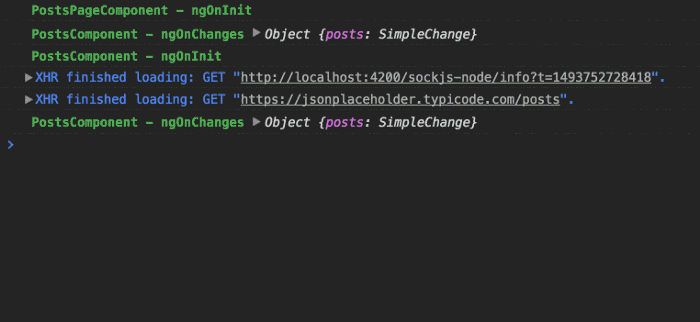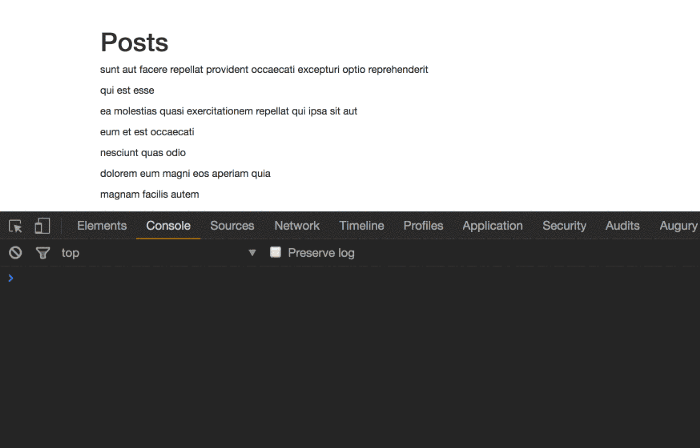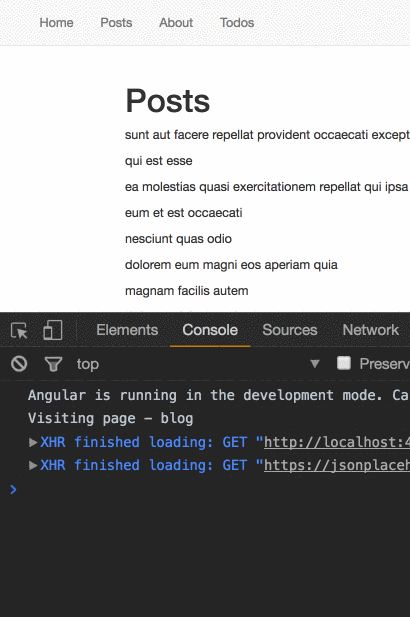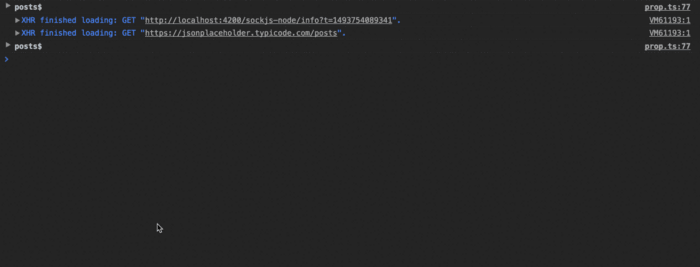https://netbasal.com/inspiration-for-custom-decorators-in-angular-95aeb87f072c
-------------------------------------------------------------
This post assumes that you at least have some working knowledge of Angular and Decorators.
If you have no prior knowledge on the subject, you can read the following articles:
This decorator will be helpful for debugging purposes. We will log the ngOnInit, ngOnDestroy and ngOnChanges lifecycle hooks.
import { environment } from "../environments/environment";
export function NgLog() : ClassDecorator {
return function ( constructor : any ) {
if( !environment.production ) {
// You can add/remove events for your needs
const LIFECYCLE_HOOKS = [
‘ngOnInit‘,
‘ngOnChanges‘,
‘ngOnDestroy‘
];
const component = constructor.name;
LIFECYCLE_HOOKS.forEach(hook => {
const original = constructor.prototype[hook];
constructor.prototype[hook] = function ( ...args ) {
console.log(`%c ${component} - ${hook}`, `color: #4CAF50; font-weight: bold`, ...args);
original && original.apply(this, args);
}
});
}
}
}
We just log the hook and calling the original method. Let’s use the decorator.
@Component({
selector: ‘posts-page‘,
template: `
<posts [posts]="posts$ | async"></posts>
`
})
@NgLog()
export class PostsPageComponent {
constructor( private store : Store<any> ) {
this.posts$ = store.select(‘posts‘);
}
}
@Component({
selector: ‘posts‘,
template: `
<p *ngFor="let post of posts">{{post.title}}</p>
`
})
@NgLog()
export class PostsComponent implements OnInit {
@Input() posts = [];
}

This decorator will be helpful when working for example with scroll events.
import t from ‘lodash.throttle‘;
export function throttle( milliseconds : number = 500 ) : MethodDecorator {
return function ( target : any, propertyKey : string, descriptor : PropertyDescriptor ) {
const original = descriptor.value;
descriptor.value = t(original, milliseconds);
return descriptor;
};
}
We are using the throttle helper from lodash and replacing the original method with our “throttle” version. Let’s use the decorator.
@Component({
selector: ‘app-posts-page‘,
template: `
<posts [posts]="posts$ | async"></posts>
`
})
export class PostsPageComponent {
constructor( private store : Store<any> ) {
this.posts$ = store.select(‘posts‘);
}
@HostListener(‘document:scroll‘)
@throttle()
scroll() {
console.log(‘scroll‘);
}
}

This decorator will be helpful when you need to report page visits to your analytics provider.
import { AnalyticsService, AppModule } from "./app.module";
export function PageTrack( pageName : string ): ClassDecorator {
return function ( constructor : any ) {
const analyticsService = AppModule.injector.get(AnalyticsService);
const ngOnInit = constructor.prototype.ngOnInit;
constructor.prototype.ngOnInit = function ( ...args ) {
analyticsService.visit(pageName);
ngOnInit && ngOnInit.apply(this, args);
}
const ngOnDestroy = constructor.prototype.ngOnDestroy;
constructor.prototype.ngOnDestroy = function ( ...args ) {
analyticsService.leave(pageName);
ngOnDestroy && ngOnDestroy.apply(this, args);
}
}
}
Based on the hook we can call the appropriate method from our Analytics service then invoke the original method.
@Component({
...
})
@PageTrack(‘blog‘)
export class PostsPageComponent {
constructor( private store : Store<any> ) {
this.posts$ = store.select(‘posts‘).pluck(‘data‘);
}
}

This decorator will be helpful for debugging purposes. You can also achieve the same thing with a custom operator.
export function log$( target : any, propertyKey : string ) {
let propertyValue;
function getter() {
return propertyValue;
}
function setter( value : any ) {
if( value instanceof Observable ) {
propertyValue = value.do(res => {
const isArrayOfObjects = Array.isArray(res) && typeof res[0] === ‘object‘;
const logType = isArrayOfObjects ? ‘table‘ : ‘log‘;
console.groupCollapsed(propertyKey);
console[logType](res)
console.groupEnd();
});
} else {
propertyValue = value;
}
}
Object.defineProperty(target, propertyKey, {
get: getter,
set: setter,
enumerable: true,
configurable: true
});
}
We can get the observable and add the do operator to log the value. Based on the value we can choose between console.table or console.log .
Let’s use the decorator.
@Component({
selector: ‘posts-page‘,
template: `
<posts [posts]="posts$ | async"></posts>
`
})
export class PostsPageComponent implements OnInit {
@log$ posts$ : Observable<Post[]>;
constructor( private store : Store<any> ) {
this.posts$ = store.select(‘posts‘);
}
}

You can leverage decorators in your apps and create powerful things with them. Decorators are not only for frameworks or libraries, so be creative and start using them.
Follow me on Medium or Twitter to read more about Angular, JS and Vue.
【转】angular 自定义 component decorator
原文:https://www.cnblogs.com/oxspirt/p/14362644.html